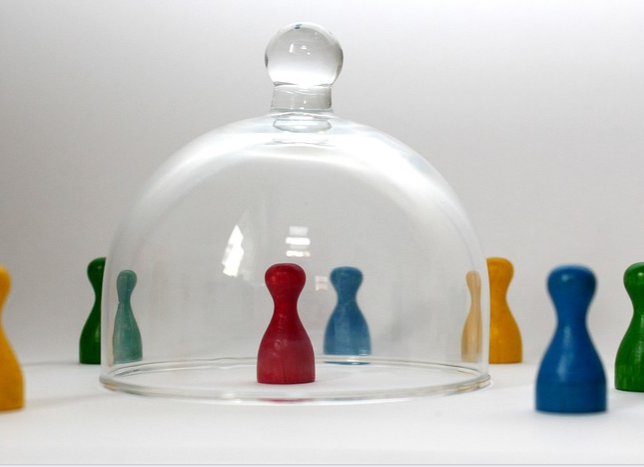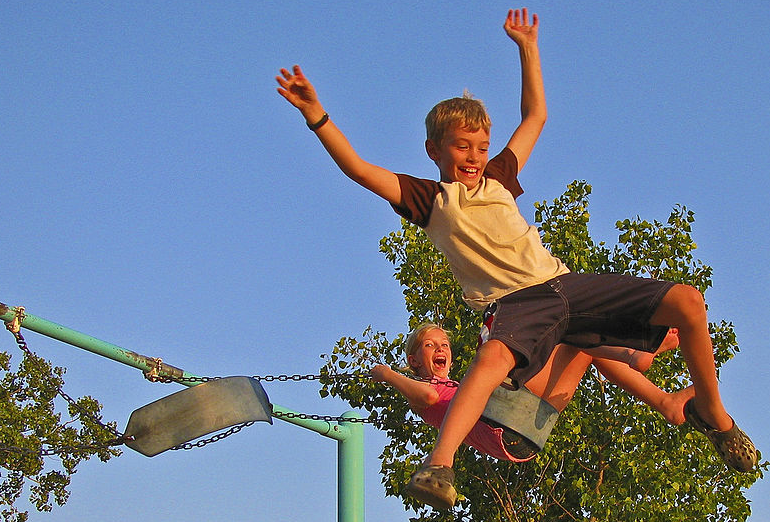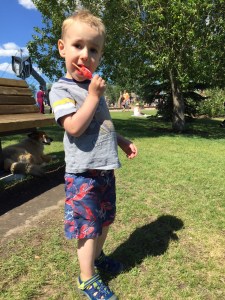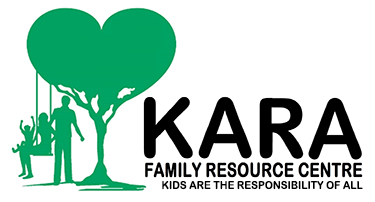Category: KARA
A Message from our Executive Director

This year has brought many changes to all of us, both professionally and personally.
This past spring the Parent Link program was cancelled and on April 1st KARA became part of the new Family Resource Network. At the same time Covid-19 started to spread and we were forced to find ways to stay connected with our KARA families virtually. I am very proud of the way our staff worked together to find creative ways to offer programs and support to families. Whether it was interactive early childhood programs, facilitating parent education sessions or working one on one with a parent over the phone, staff rose to the challenge. As we are now back to working from home we are continuing to meet this need.
I want to thank everyone of our staff and Board members for their continuing commitment to KARA as we navigate this ‘new normal. In September, I celebrated 16 years with KARA Family Resource Centre. I have always maintained that I had the best job in the world, and this was due to the people I worked with – staff, volunteers, parents and children, and Board members. It is with mixed feelings that I let you know I am retiring at the end of the year.
Change is inevitable, and I have decided that it is time for me to leave KARA and spend time with my family, do some traveling (soon, I hope), and explore other adventures life has in store for me. I am very pleased to let you know that Darby Wilkinson will be taking my place in January. Darby is very skilled, and I know she will be a great addition to our team. Please join me in welcoming Darby to KARA!
~ Pam Doubleday
Coping During a Pandemic

Naturally, in the current medical climate, there is a lot of room for worry. Our families are at the front of our minds and we are finding ourselves in a different situation than we’ve been used to, and likely one we’ve never faced before.
The World Health Organization officially declared COVID-19 a pandemic on March 11. A pandemic is a global outbreak, occurring over a wide geographic area and affecting an exceptionally high proportion of people. The last pandemic to occur was the H1N1 Influenza outbreak, which was declared in 2009. I was in college practicing to be a nurse when it was declared, but even still, now that I have a family, I’m more engrossed with the COVID-19 situation and ever-watching as it unfolds. I’m sure many of the parents out there feel similarly, and are thinking of their loved ones as they make family decisions. Therefore, to help my family and yours, I’ve sourced and summarized some coping methods specific to pandemics in the hope that they help empower everyone and make family management easier.
The Psychologists’ Association of Alberta has developed a Psychological Coping During a Pandemic Fact Sheet to help everyone understand normal responses to abnormal events. Such normal responses include anxiety, unrealistic fears, and strong defensive actions. They’ve given recommendations to help improve psychological responses and advice on when to seek help. Let’s walk through the recommendations together.
Staying informed but not overloaded – This is easy to understand but hard to accomplish. With the pandemic currently affecting all of us around the globe, and Alberta just recently joining the fight, the news highlights little else. On top of that, we are living in a time sure to be known as the social media era. It’s hard not to get sucked into conversations regarding the current situation and the current political decisions regarding it. However, I’ve found a little path that I’ve managed to walk regarding social media distancing: I check government websites (Alberta Health Services, the World Health Organization, Public Health Agency of Canada, & the US Center for Disease Control are all reliable information sources) and join the conversation with a few select colleagues whom I find calming in nature. Government websites provides relevant, prompt facts that are not inundated with gossip, and naturally calming people provide social support, as well as points of view that are not anxiety producing. It’s been a few days since I’ve distanced myself from the exceptionally wide world of information and I do already feel less stressed and more able to make sound decisions regarding precautions.
Staying physically healthy – I truly believe the sudden stresses (as well as the time of year) associated with the pandemic declaration are causing some of those around me to come down with the common cold or other common illness. Stress reduces the body’s ability to ward off any illness; therefore, keeping a healthy lifestyle, even in the middle of winter with recreation facility closures, is important. How can we do this? My son and I have found a way. Youtube! Earlier this year, I had planned for us to take a yoga class together down the street at the local recreation centre. Unfortunately, we never got our chance. Therefore, I Amazon’d ourselves a couple of yoga mats and we’ve started working out to Youtube yoga videos every night before bed. It’s been such a hit that I know we will keep it up even after facilities open again. It’s easier on the pocket book and he loves the variety we can get!
Maintaining perspective – “Our government needs to prepare for possible worst-case scenarios in order to protect the public. The public, however, does not need to expect the worst.” Reading this really opened my eyes as to the direction local media was going – perhaps they were blowing things out of proportion a bit, emphasizing every story and repeating tragic news. Yes, our government is making changes that really impact us citizens, but that does not mean the worst case is going to transpire. All of the measures being taken are preventative and are made to prepare, not panic.
Build your and your family’s resilience – Resilience is a profound mental tool that can help in any situation. Building mental resilience takes effort and time, but it’s incredibly beneficial. How to do it? There are many ways, and here are some of the ways that have helped me: practicing thought awareness by preventing negative thoughts from derailing your mental track; practicing cognitive restructuring, such as building positive thoughts and changing the way you perceive new thoughts; choosing positive responses to mistakes, such as letting things go and learning from them; and building your social network to include people that make you a better person. For resilience building exercises, check this resource out.
Communicate with your family – Discuss the news honestly with your family, keeping topics age-appropriate. Many of them may be too young to understand the effects of the current situation, but topics such as hand-washing and covering your cough with your elbow, may help them understand certain aspects and preventative measures. With most children at home now, keeping up with routines is also very important in reducing anxiety in children. Try maintaining a schedule that does not conflict with social distancing policies, like arts and crafts time or outdoor walks. Remember that children will watch your behaviors and emotions for cues on how to manage their own feelings. You may want to limit your family’s media consumption to help reduce collective anxiety.
Making a plan – Developing a plan for a possible outcome, such as prolonged isolation, job loss, or diagnosis, could really help lessen anxiety. Know the correct way to monitor for illness, manage symptoms, and report a suspected case. These details can be found here. Keeping up-to-date on emergency financial assistance (to be available for applications next week at alberta.ca) can also help alleviate stress. Those with mortgages and who qualify can also request to defer mortgage payments for up to six months to help cope financially. Lastly, ensure your household, close friends, and neighbours are aware of plans so that everyone feels supported and strengthened together. You can make a buddy system for checking on each other or helping with errands in the event support is needed. Visit the Federal government’s website on emergency preparedness for more great info.
Seek additional help – Those that feel overwhelmed or have prolonged reactions that negatively affect their daily activities can seek professional help by calling Edmonton’s Mental Health Crisis Services Distress Line. It’s a confidential service provided seven days a week to those requiring additional mental help. Find more info here.
Working Together
All of us at KARA do miss our KARA families and hope these tips on managing stress will empower all of our families during this time. We hope to see you all again when it’s safe to resume programs and look forward to working together again! Stay safe and take care!
Risky Play

Have you ever found yourself enjoying a nice cup of tea and watching the morning news in peace when suddenly a pint-sized person jumps from the arm of the couch into your unsuspecting face?
Children love risky play, especially my children. They are constantly looking for ways to increase the thrill of the game, even if it means sacrificing safety. The purpose (other than to give me a heart attack) is to increase the fun and explore the rules of their environment.
A Learning Technique
Risky play is a learning technique – what I mean by this is that when children are engaging in risky play, they are conducting a science experiment (without knowing it). They are using reasoning and chance, as scary as it is, to determine what they are comfortable with, and what their bodies and environment will allow.
Benefits of Risk
Risk management skills, along with self-confidence, resilience, and reducing the chance of injury, are all learnings a child gains from engaging in risky play.
I know what you are about to ask; how can risky play reduce the chance of injury? The science tells us that those children who engage is risky play have a much greater understanding of what is likely to cause injury. A child that has continually experimented with tree climbing knows the best routes to take, which trees are safe to climb, and how to go back the way they came.
If you had never climbed a tree as a small child and then are asked to climb one as an adult, your body, being longer and stronger, would allow you to climb to the top without difficulty. But now you’re in a pickle because you’re at the top of a tree and don’t know how to get down. A child can only climb as high as his or her body and environment allows, not to the top. They take small steps as they mature, pushing themselves just as much as is allowable.
A Young Life Without Risk
Risky play certainly seems dangerous and it can result in injury, so why hasn’t natural selection weeded it out?
Experiments have been done on rats to deprive them of risky play and the outcome was less than appealing. The researchers did not deprive them of other types of socializing, just risky play, and they found that the rats grew up emotionally crippled. When faced with the unknown, instead of showing curiosity and adaptability like their risky play counterparts, the emotionally crippled rats would seize up in fear or lash out with aggression (click here). Not a rat-ical way to grow up.
On the flipside, the science has shown that risky play has quite the evolutionary advantage. I’m sure everyone can recall their puppy or kitten play wrestling with them or another animal. Perhaps to wolf cubs, this is practice for later squabbles over meals. Monkeys will leap for branches that are just within reach, pushing themselves further and further each time. This experience will certainly come in handy when leaping away from challengers. Certainly one of the most perilous types of risky play can be seen in mountain goats (kids) that frolic on incredibly steep, rocky slopes. Undoubtedly this will make them hard prey to catch. All animals engage in risky play and it benefits them tremendously.
Freedom + Fear = Thrill (⃠ Danger)
So now that we are all aware that risky play is a benefitting activity to engage in, should we just let our youngsters have at it – absolutely not. There are still real dangers in hazardous play (which often accompanies risky play), so parents have to be vigilant in identifying and removing the hazards.
Risk – The possibility of something happening
Hazard – A potential source of danger
Hazards are often beyond a child’s ability to recognize. Risks are uncertainties that a child often recognizes and challenges (click here).
Back to our lovely tree example, the child sees a challenge and is uncertain about what will happen if they climb to a certain branch. What the child does not recognize is that the branch they’ve chosen to climb to has rotted out – a hazard the parent needs to control. Removing the hazard can be done by removing the branch, or, even better, teaching the child how to recognize rotted branches. By controlling the hazards, the child is still able to engage in risky play without an increase in the chance of injury.
Risk now equals hazards divided by parental safeguards.
Risky Play in Your Community
I love the tree examples I’ve shared with you but when I look around the current area where I’ve chosen to raise my family, not many trees pop out to say “climb me.”
Living in a city rather than countryside can seem a little challenging when it comes to engaging in risky play, but it’s important to note that risky play hotspots can be found anywhere! Your local park, your backyard, your living room – anywhere! When it was too cold and slippery outside for hazardless risky play, my family and I set up an obstacle course throughout the house. My preschooler would run and jump from chair to chair and my toddler would bound into piles of pillows. When we play in the backyard, my kids love to use the short beam surrounding my yard to perfect their gymnastic skills. The chance of a small drop to the grassy lawn below certainly livens up the game! And local parks encourage plenty of risky play activities with its monkey bars, twisty slides, and swings. All you have to do to be a vigilant parent in these scenarios is to remove debris, check for the correct signage for safety standards, and be a helping hand when your child needs it!
To find out more on how Canada is improving your child’s access to independent and unstructured outdoor play, click here.
Last Note on Inspiring Yourself
“Security is mostly a superstition. Life is either a daring adventure or nothing.” — Helen Keller
Please feel free to leave a comment or story about the risks you and your child take together!
My KARA Heros

Hello again, great to see you back! This week let’s dive into the KARA Summer Program; a fun-filled adventure around every corner, from great dinosaurs to the wild safari, every week has something different to offer!
If you weren’t aware, KARA has three locations; KARA, KARA-Too, and Dunluce Tenant Centre. Each of the addresses can be found on the KARA homepage or on the summer program calendar. Choose the location nearest you or attend all three!
The summer program calendar details the weekly themes for the free drop-in programs, held Tuesday through Thursday and Saturday, at varying times to accommodate those difficult nap schedules. Interspersed throughout the summer, we will be hosting field trips that are sure to inspire and wow your little ones, including nature centres, spray parks, and a dinosaur theme park!
When packing for these adventures, please remember necessities such as sunscreen, water bottles, hats, and comfortable shoes. Odd bits and pieces that may apply to your family may also include swim diapers, baby food, and extra changes of clothes. A light lunch will be served but if your children are anything like mine, it’s best to pack a mini fridge into your diaper bag.
Last summer, when KARA hosted a field trip to the Ukrainian Village, I attended as a Mom and hauled along my toddler (featured picture) and newborn baby. At first I felt like Mom of the Year. Look at me, strong and independent, on an outing with two young children and I can handle anything! As the day wore on, my children began to tire – and so did I! I’d try to keep my toddler’s spirits up with food, toys, and a happy singsong voice that made birds abandon their nests. All for not though, as I soon found out what being a Mom of a toddler will teach you if nothing else, very little can deter an impending temper tantrum.
At the time there was no mistaking the signs; the wobbly walk, the whimpering whines, the tearful eyes, and there it was. My son collapsed on the ground, his childlike, yet mighty voice thundering his displeasure. As I stood there at a loss, shocked with the task of consoling a two year old heap of emotions rolling on the grass in front of me while simultaneously holding an infant in my arms, in swooped my heroes. The KARA team took and cared for my newborn while I consoled my tired child, all the while putting the pieces of my dignity back together. It wasn’t so bad after all.
So if your child’s tantrums or behaviour in public places are the kind of moments you are dreading, deterring you from attending a field trip or program, fear not. We’ve all been there (and the ones that haven’t should give credit to where credit is due). Parenting isn’t easy. Mom of the Year goes to those that get out and about and if you attend KARA this summer, put your mind at ease. The KARA team has been there hundreds of times over and will be there for you too. Dignity and all.

